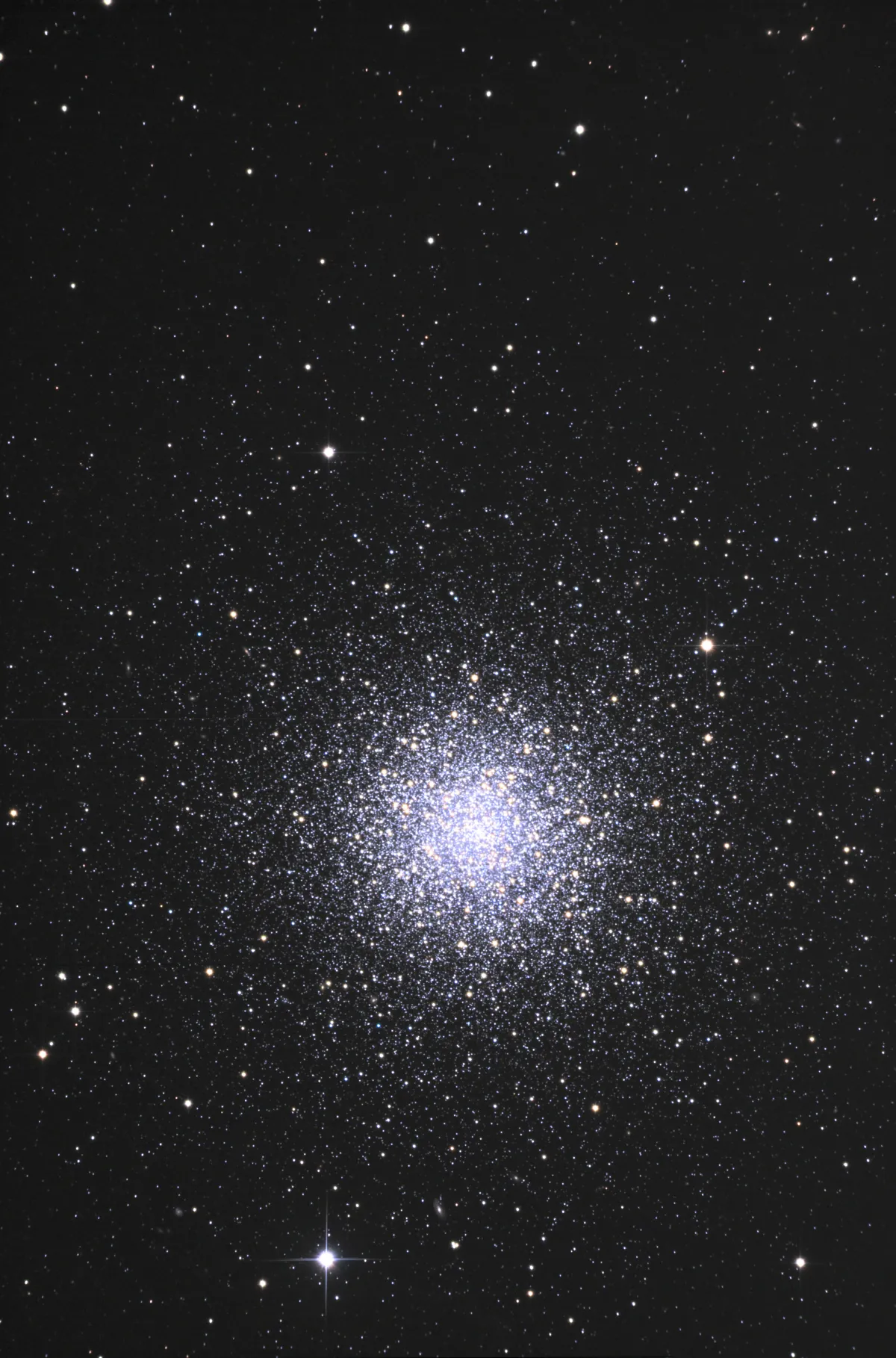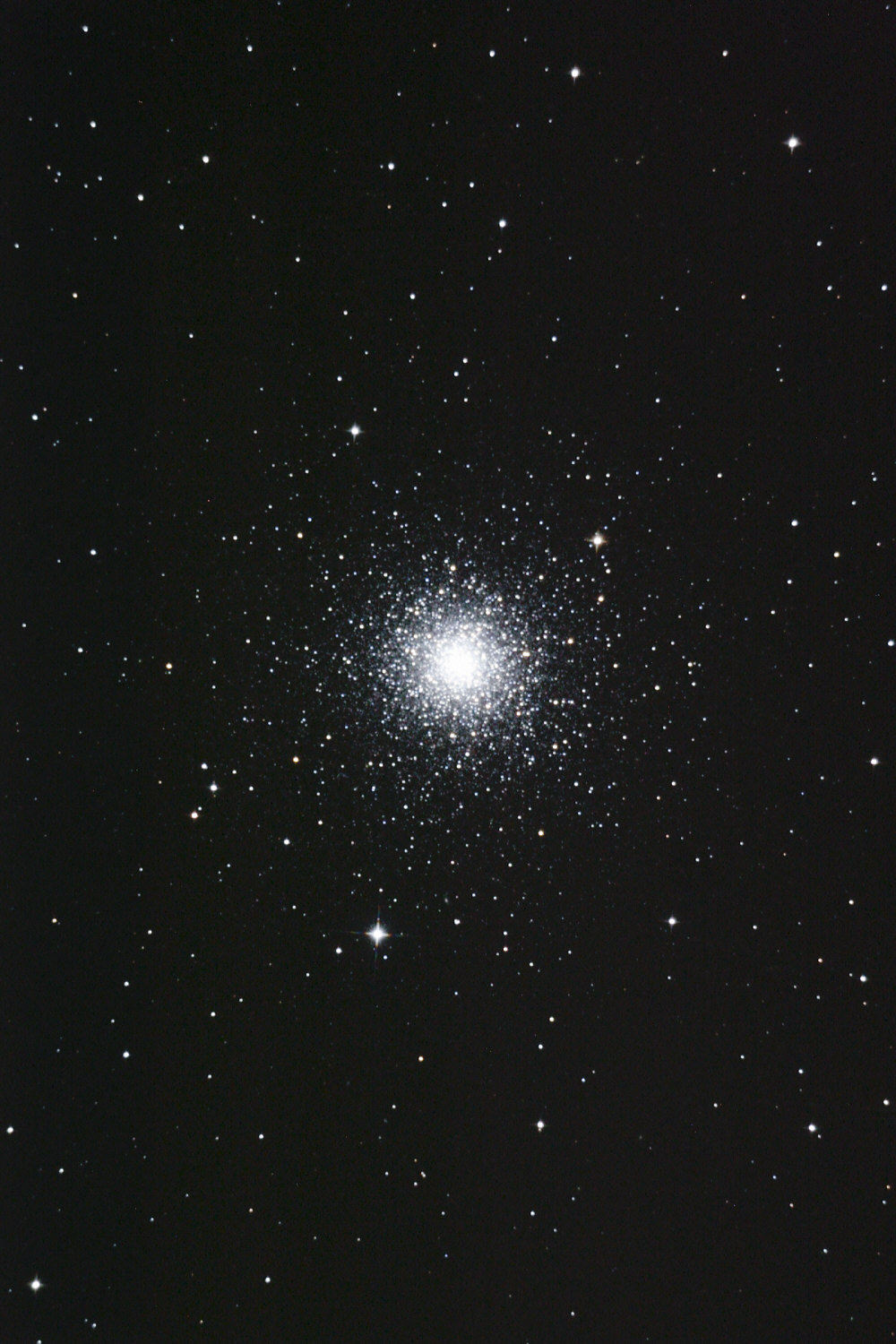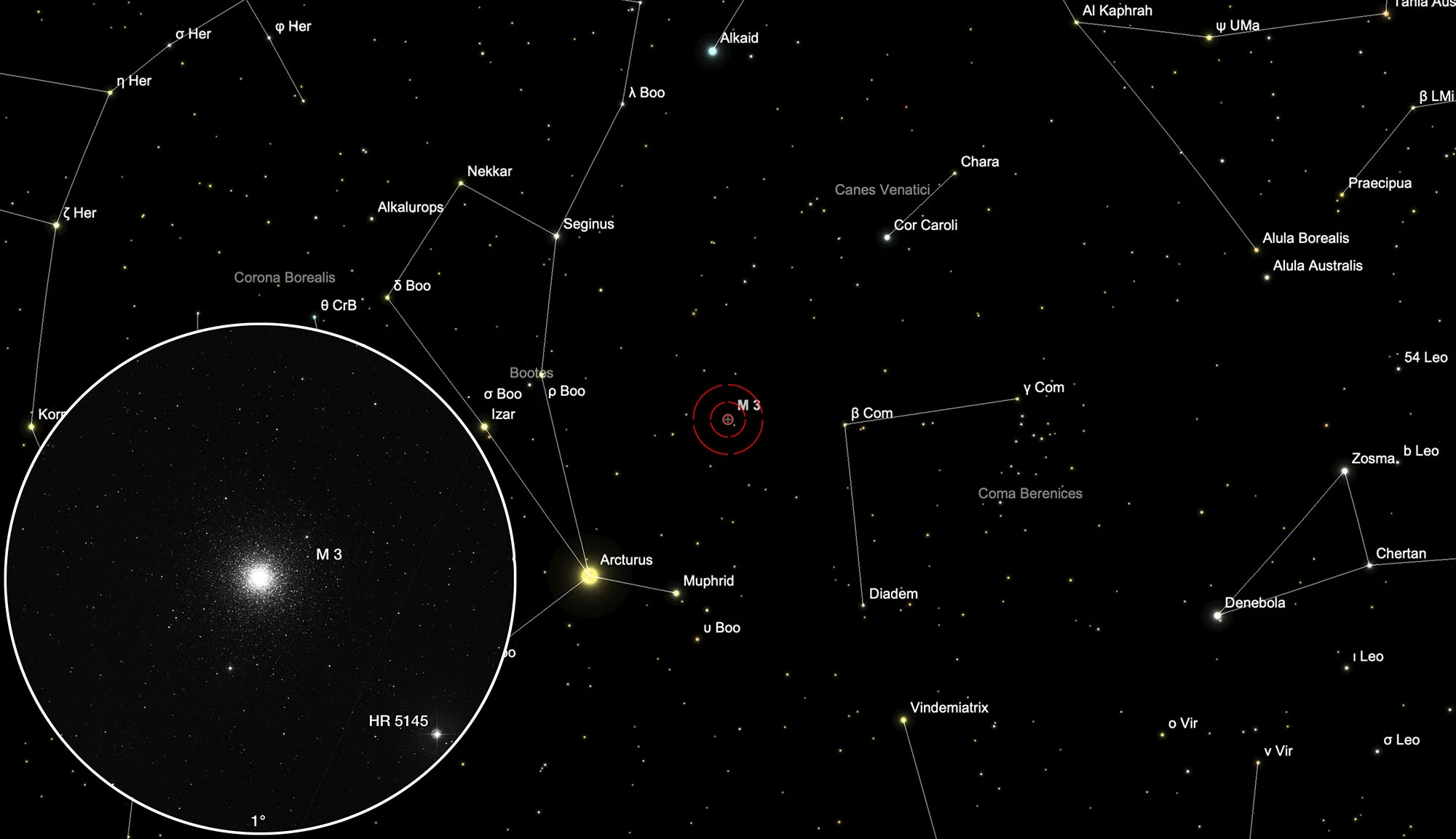Globular Cluster Messier 3


History
This globular cluster was discovered by Charles Messier on 3 May 1764. He listed it as third entry in his catalogue and described it as follows: «Nebula discovered between the Herdsman and one of the Hévélius Hounds, it contains no stars, the centre is brilliant and its light is lost insensibly, it is round; by a beautiful sky one can see it with a telescope of one foot: it will be brought back on the Map of the Comet observed in 1779. Mémoires de l'Acadmie of the same year. Reviewed on 29 March 1781, still very beautiful.» [281]
About two decades later Sir William Herschel observed the objects found Messier and recognized the true nature of many of these «nebulae». He wrote: «The excellent collection of nebulae and clusters of stars which has lately been given in the Connoissance des Temps for 1783 and 1784, leads me next to a subject which, indeed, must open a view of the heavens. As soon as the first of these volumes came to my hands, I applied my former 20-feet reflector of 12 inches aperture to them; and saw, with the greatest pleasure, that most of the nebulae, which I had an opportunity of examining in proper situations, yielded to the force of light and power, and were resolved into stars. For instance the 2d, 5, 6, 10, 12, 13, 14, 15, 16, 19, 22, 24, 28, 30, 31, 37, 51, 52, 53, 55, 56, 62, 65, 66, 67, 71, 72, 74, 92, all which are said to be nebulae without stars, have either plainly appeared to be noting but stars, or at least to contain stars, and to shew every other indication of consisting of them entirely.» [27]
Physical Properties
What is remarkable about M 3 is its oval shape. The greatest star concentration is a little southwest of the centre of the cluster. Similar to other large globular clusters, some outer stars seem to be arranged along a radial line, a phenomenon that was first noticed by the two Herschels and Lord Rosse. Rosse also found some dark areas in the central mass, similar to M 13. The presence of dark clouds is of great interest as it was generally assumed that globular clusters do not contain dust and gas. If one considers these dark nebulae as foreground objects, however, one could argue that such small dark nebulae could also be distributed all over the sky, but could not be detected due to the lack of a bright background object. However, M 3 lies in an area far away from the Milky Way, which is largely free of interstellar absorption. This suggests that the dark clouds actually belong to the globular cluster itself.
M 3 contains more than 45'000 stars from around 12 mag up to the limit of perceptibility. The number of variable stars is greater than in any other globular cluster observed. The period of most of these stars lasts about half a day, and in some cases the light changes so quickly that it doubles in ten minutes. Stars of this type, called cluster variables, appear to be a subclass of the known Cepheids. The typical example is the star RR Lyrae. Using the period-luminosity relationship, a distance of 31'000 light years could be determined. [4, 100]
| Designation | NGC 5272 |
| Type | GCL (VI) |
| Right Ascension (J2000.0) | 13h 42m 11.2s |
| Declination (J2000.0) | +28° 22' 34" |
| Diameter | 18 arcmin |
| Visual magnitude | 6.3 mag |
| Metric Distance | 10.200 kpc |
| Dreyer Description | !!, globular cluster of stars, eB, vL, vsmbM, st 11… |
| Identification, Remarks | h 1663; GC 3636; M 3; GCL 25 |
Finder Chart
The globular cluster is located between the constellations Bootes and Coma Berenices in the constellation Canes Venatici. It is roughly halfway from Arcturus (α Boötis) - Cor Caroli (α Canum Venaticorum), roughly where it is crossed by the connecting line ρ Bootis - β Comae Berenices. There the search for Messier 3 is to be started with a large field eyepiece. The globular cluster is highest in the sky from December to September.
Visual Observation
400 mm Aperture: The sight of M 3 is a feast for the eyes, framed by a triangle of three stars. In the 21 mm ethos (85x), the globular cluster appears resolved right into the centre. With increasing magnification, more and more stars become visible in the core area until the cluster fills the entire image field. — 400 mm f/4.5 Taurus Dobsonian, Glaubenberg, SQM 21.34, a bit windy, Sahara dust and hazy, 22. 5. 2022, 00:15, Bernd Nies
